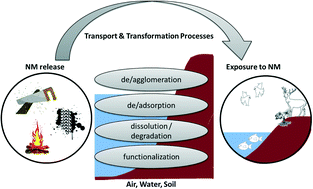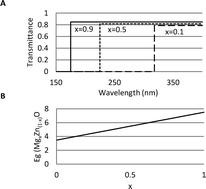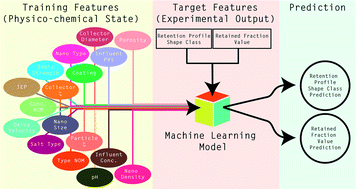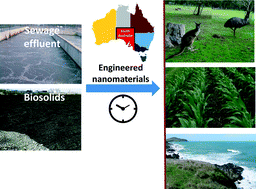Themed collection Modelling in Environmental Nanotechnology

Progress towards the validation of modeled environmental concentrations of engineered nanomaterials by analytical measurements
Validation of modeled environmental concentrations of nanomaterials is currently not possible.

Environ. Sci.: Nano, 2015,2, 421-428
https://doi.org/10.1039/C5EN00100E
Modeling nanomaterial fate and uptake in the environment: current knowledge and future trends
A schematic summary of the most important transformation processes a NM may undergo during environmental transport, and the parameters of highest importance for inclusion in models of NM environmental fate and uptake.

Environ. Sci.: Nano, 2016,3, 323-345
https://doi.org/10.1039/C5EN00207A
Computational design of safer nanomaterials
Nanomaterials are expected to find applications in numerous consumer products, posing the challenge to guarantee their safety and environmental sustainability before they can be transferred from research labs to end-consumer products.

Environ. Sci.: Nano, 2015,2, 454-462
https://doi.org/10.1039/C5EN00066A
Modelling the interaction processes between nanoparticles and biomacromolecules of variable hydrophobicity: Monte Carlo simulations
The conformational properties and formation of a complex between a weak flexible biomacromolecule chain of variable hydrophobicity and one negatively charged nanoparticle in the presence of explicit counterions are investigated here using Monte Carlo simulations.

Environ. Sci.: Nano, 2015,2, 327-339
https://doi.org/10.1039/C5EN00054H
Prediction of nanoparticle transport behavior from physicochemical properties: machine learning provides insights to guide the next generation of transport models
Machine-learning methods are used to identify factors that govern transport of nanoparticles in column experiments.

Environ. Sci.: Nano, 2015,2, 352-360
https://doi.org/10.1039/C5EN00050E
Probabilistic modelling of engineered nanomaterial emissions to the environment: a spatio-temporal approach
For the environmental risk assessment of engineered nanomaterials (ENM) knowledge about environmental concentrations is crucial.

Environ. Sci.: Nano, 2015,2, 340-351
https://doi.org/10.1039/C5EN00004A
About this collection
Guest Edited by Mohammed Baalousha, Panos Georgopoulos, Jamie Lead and Dave Spurgeon, this themed collection on modelling in environmental nanotechnology features papers presenting state-of-the-art models for the fate, behaviour, exposure, uptake and toxicity of nanomaterials in the environment and in organisms. Research on a wide range of model types for environmental and biological processes affecting nanomaterial behaviour is also included.